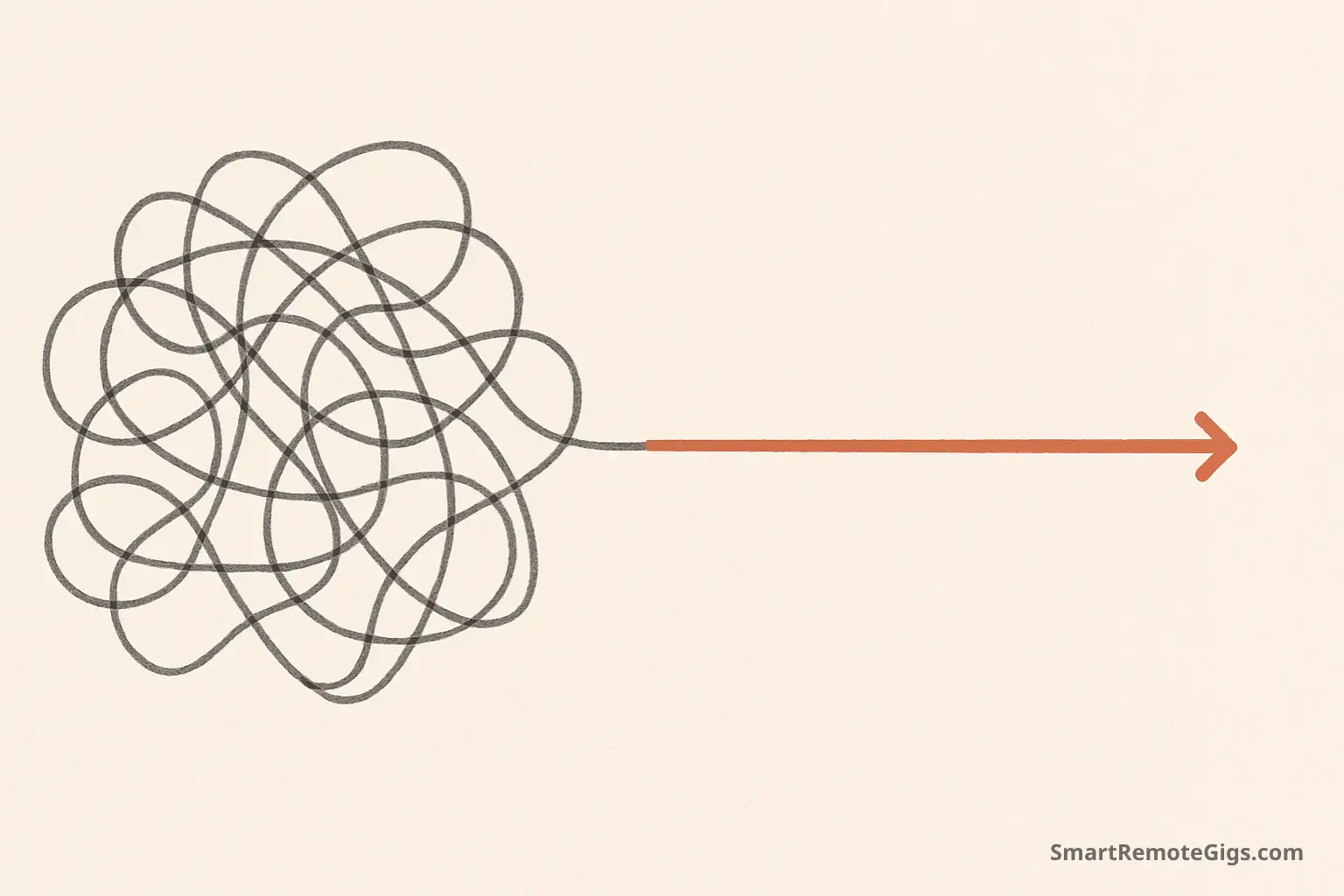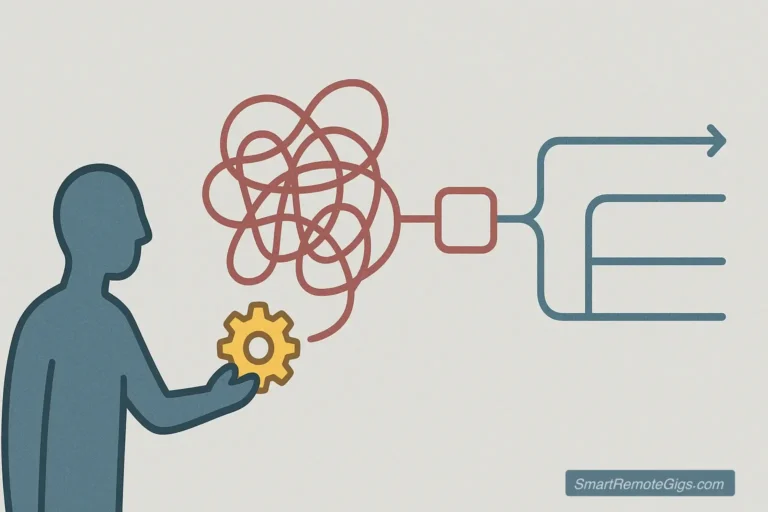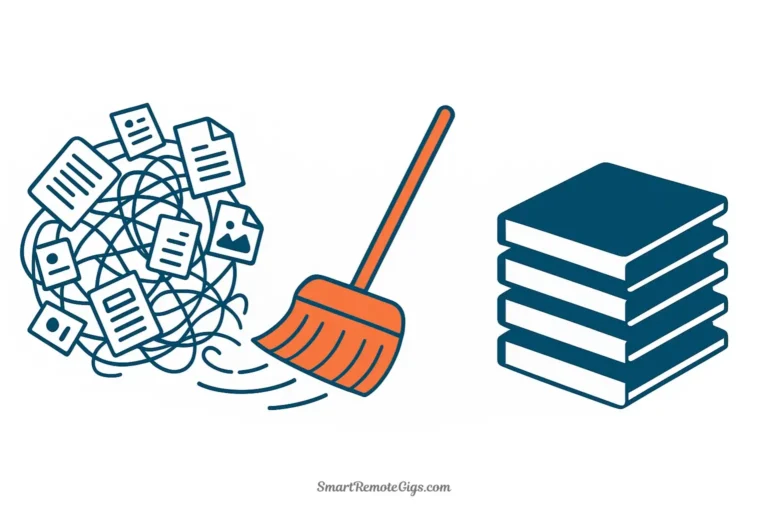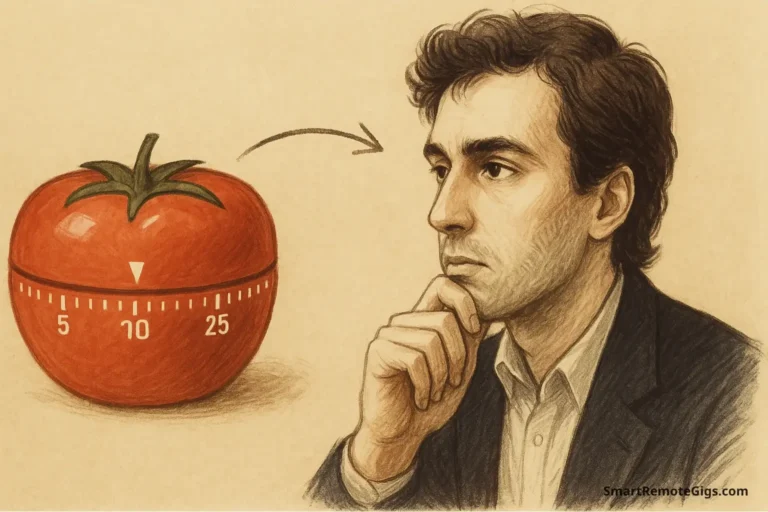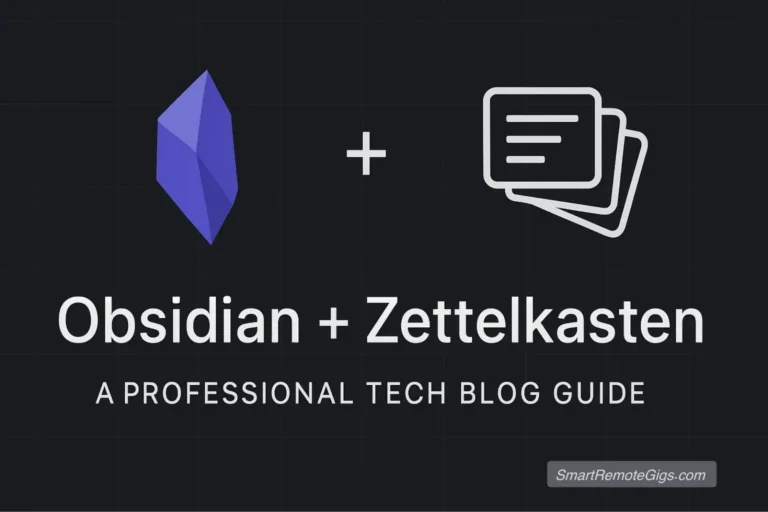You’ve heard about the Pomodoro Technique. Maybe you’ve even tried it a few times, setting your timer for 25 minutes and diving into work with the best intentions. But somehow, it just isn’t clicking. You find yourself working through breaks, getting distracted mid-session, or feeling like the technique is more hindrance than help.
Here’s the truth: the Pomodoro Technique is deceptively simple in concept but surprisingly nuanced in execution. While the basic framework—work for 25 minutes, break for 5—seems straightforward, there are specific ways to implement it that make the difference between transformative productivity and frustrating failure.
The good news? The most common Pomodoro mistakes are entirely fixable with small adjustments to your approach. In this guide, we’ll identify the top 5 pitfalls that derail even well-intentioned practitioners and provide you with clear, actionable solutions you can implement immediately.
If you’re new to the technique entirely, we recommend starting with our comprehensive Pomodoro Technique Guide: Master Your Focus in 5 Steps to build a solid foundation. But if you’ve already tried the basics and are struggling, this troubleshooting guide is exactly what you need.
By the end of this article, you’ll understand not just what you’ve been doing wrong, but exactly how to course-correct and finally make the Pomodoro Technique work for you.
Mistake #1: Not Respecting the Timer (Working Through Breaks)
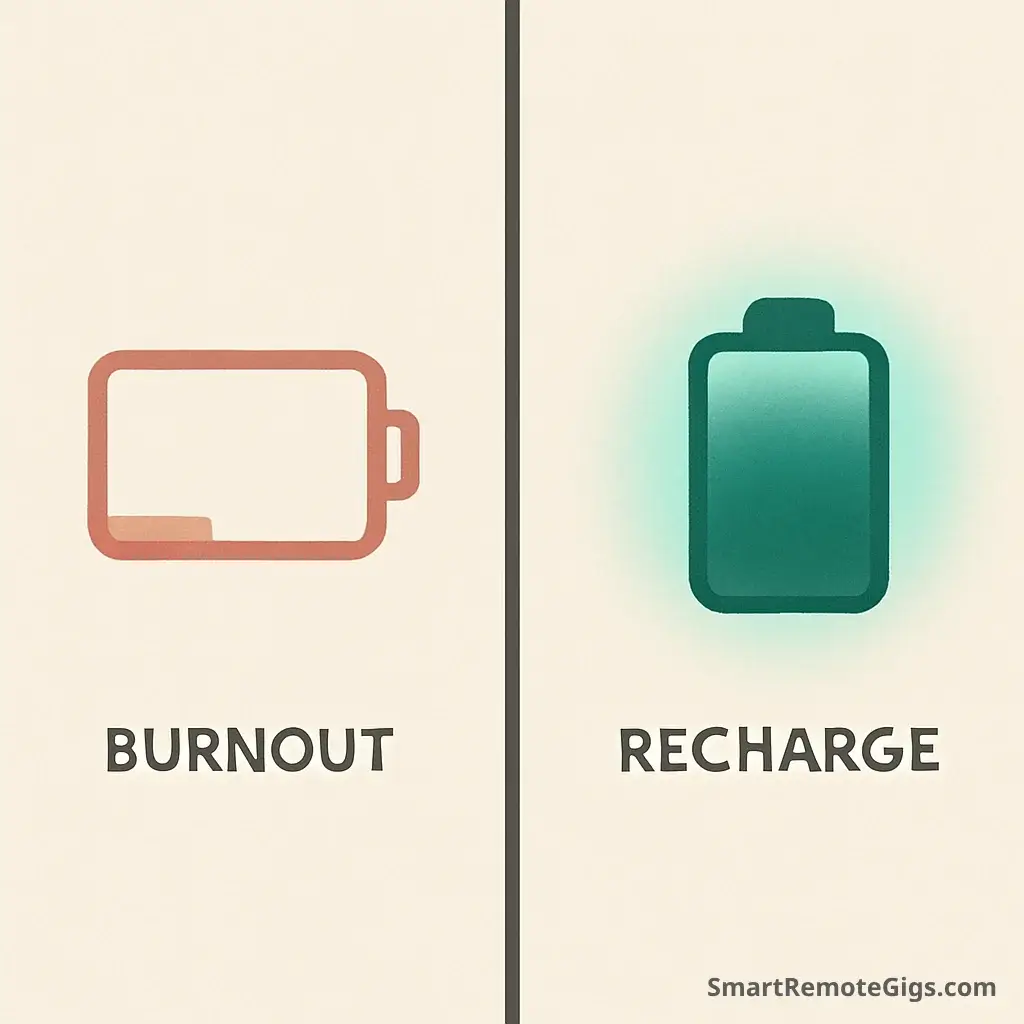
The timer rings after 25 minutes of focused work, but you’re on a roll. You’re in the middle of a breakthrough idea, or you’re finally making progress on that difficult problem. “Just five more minutes,” you tell yourself, and you keep working through your scheduled break.
Why It’s a Problem
Working through breaks might feel productive in the moment, but it’s actually sabotaging your long-term performance and defeating the core purpose of the Pomodoro Technique. When you skip breaks, you’re essentially turning the method into extended work sessions with arbitrary timer interruptions—missing the entire point of the system.
The breaks aren’t rewards for completing work; they’re an integral part of the productivity engine. Research in cognitive psychology shows that your brain consolidates information and recharges during rest periods. Without these breaks, mental fatigue accumulates rapidly, leading to:
- Decreased quality of work as your session progresses
- Higher error rates and poor decision-making
- Mental burnout that can last for hours or even days
- Loss of creative insights that often emerge during mental downtime
Perhaps most importantly, consistently ignoring the timer trains your brain to not take the system seriously. If you don’t respect your own boundaries, the psychological power of the technique—that sense of commitment and urgency—completely disappears.
The Fix
The solution requires a fundamental mental shift: you must view the break as a productive part of your work process, not an interruption to it. Here’s how to make this transition:
🔄 Reframe breaks as “performance optimization time.” Instead of seeing the break as stopping work, think of it as doing a different type of work—the work of preparing your brain for peak performance in the next session. Just as athletes don’t view rest between sets as “stopping exercise,” you shouldn’t view breaks as “stopping work.”
⏹️ Implement the “immediate stop” rule. When the timer rings, stop immediately—even mid-sentence, even if you’re about to solve the problem, even if stopping feels counterproductive. This might seem extreme, but it serves two crucial purposes: it builds the discipline muscle that makes the entire technique effective, and it prevents you from second-guessing the system.
🧠 Trust the process. That brilliant idea or breakthrough moment will still be there when you return, often clearer and more developed thanks to your brain’s background processing during the break. Many Pomodoro practitioners report that their best insights actually come during or immediately after breaks, not during focused work time.
🚶 Use a physical ritual to transition. Stand up, stretch, or take three deep breaths the moment your timer rings. This physical action helps create a mental separation between work mode and break mode, making it easier to honor the boundary.
Mistake #2: Choosing Vague or Overly Large Tasks
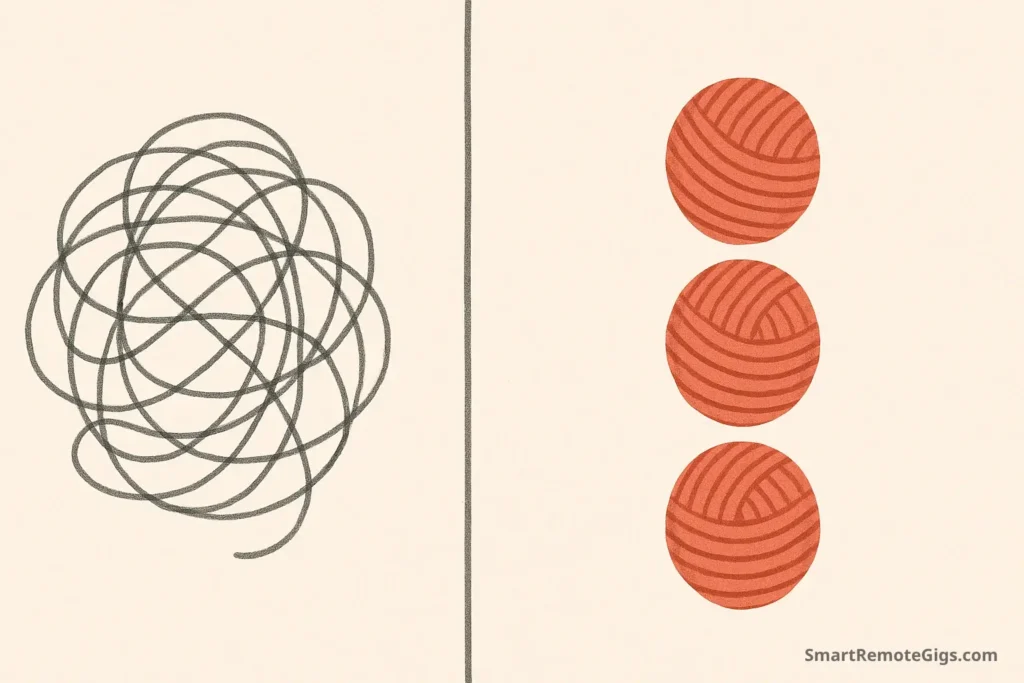
You sit down for your Pomodoro session with goals like “work on presentation,” “study for exam,” or “organize finances.” Twenty-five minutes later, you’ve made some progress, but you can’t quite articulate what you accomplished or whether you’re closer to being done.
Why It’s a Problem
Vague or oversized tasks create a cascade of productivity problems that undermine the Pomodoro Technique’s effectiveness. When your task lacks specificity, your brain doesn’t know what success looks like, leading to:
⚡ Decision fatigue during your session. Instead of working, you spend mental energy constantly deciding what to do next within your broad task category. This cognitive overhead reduces the time and energy available for actual productive work.
📉 Lack of progress feedback. With no clear endpoint, you can’t experience the satisfaction of completion that provides motivation for subsequent sessions. This missing sense of progress is demotivating and can lead to abandoning the technique entirely.
⏰ Difficulty estimating future sessions. When tasks are poorly defined, you can’t learn how long different types of work actually take, making it impossible to plan realistic daily schedules or set appropriate expectations.
😰 Procrastination trigger. Large, undefined tasks feel overwhelming, which can trigger procrastination behaviors even within a structured 25-minute session.
The Fix
The solution is to become a master of task decomposition—breaking large, vague projects into specific, actionable steps that can be meaningfully advanced in 25 minutes.
✅ Apply the “one pomodoro, one outcome” rule. Each session should have a single, specific outcome you can clearly articulate. Instead of “work on presentation,” try:
- “Create outline with 5 main points for sales presentation”
- “Write introduction paragraph for Q3 results presentation”
- “Find and organize 3 supporting statistics for market growth section”
🎯 Use action verbs and concrete deliverables. Your task should start with a clear action verb (write, research, organize, calculate, design) and end with a tangible deliverable. This creates clarity about both the process and the outcome.
💬 Apply the “could I explain my progress to someone else?” test. After completing a Pomodoro, you should be able to clearly explain to another person what you accomplished. If you can’t, your task was likely too vague.
🔗 Break projects into a “Pomodoro sequence.” For larger projects, spend one Pomodoro planning and breaking the work into subsequent focused sessions. For example:
- Pomodoro 1: Break “organize finances” into specific steps
- Pomodoro 2: Gather all financial documents into one location
- Pomodoro 3: Set up digital folder structure and filing system
- Pomodoro 4: Enter January transactions into tracking system
📊 Estimate and adjust. As you gain experience, you’ll become better at estimating how many Pomodoros different types of tasks require. Keep track of your estimates versus actual time spent to improve your planning accuracy.
For users who want to build a truly robust system for clarifying projects and next actions, we highly recommend our advanced guide on Combining Pomodoro & GTD.
Mistake #3: Letting Distractions Derail Your Session
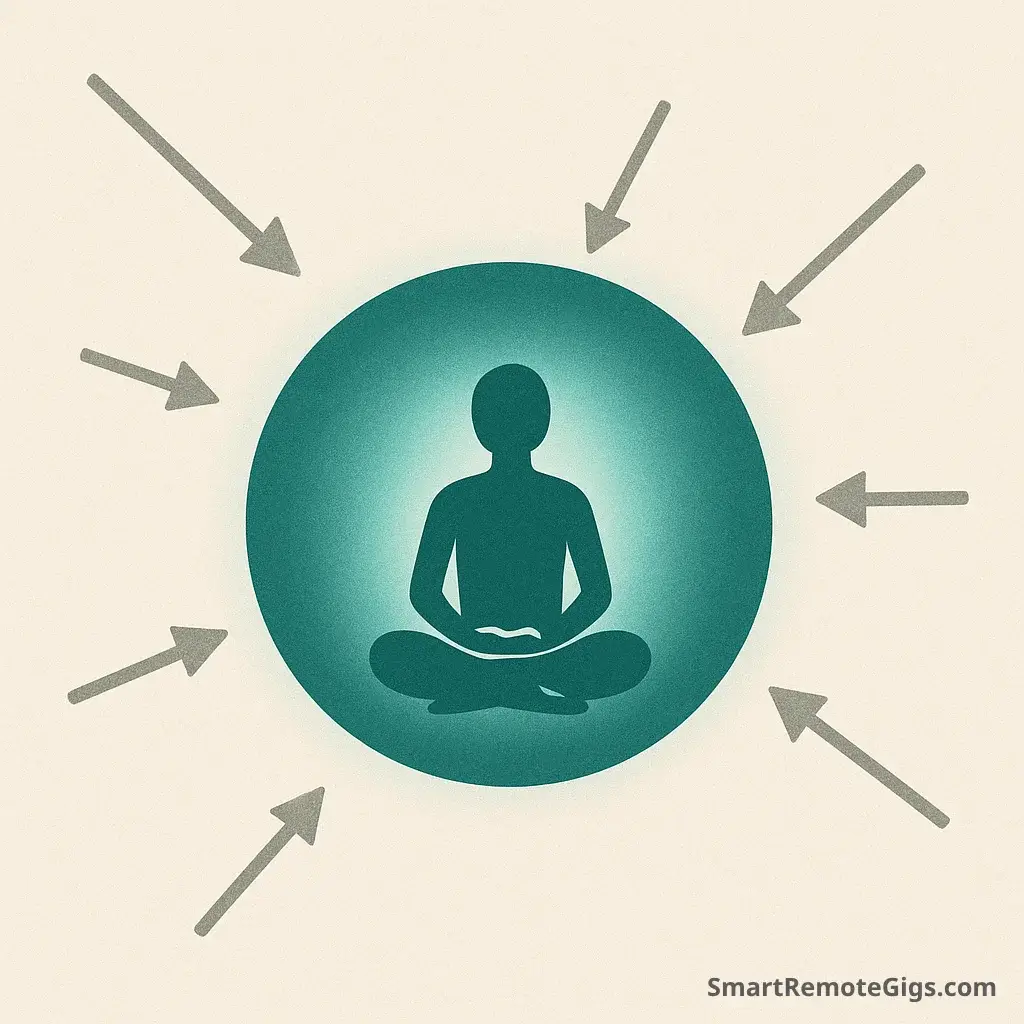
Your phone buzzes with a notification. A colleague stops by your desk with a “quick question.” Your mind remembers something you need to research for another project. Before you know it, your focused 25-minute session has become a fragmented mess of half-attention and task-switching.
Why It’s a Problem
Distractions don’t just steal time—they completely break your flow state and cognitive momentum. Research from the University of California, Irvine found that after an interruption, it takes an average of 23 minutes and 15 seconds to fully refocus on the original task. In a 25-minute Pomodoro, even a single distraction can prevent you from ever reaching deep focus.
The problem compounds because each distraction makes subsequent ones more likely. Once your brain experiences the dopamine hit from checking a notification or engaging in conversation, it begins craving more stimulation, making it harder to maintain focus for the remainder of your session.
Furthermore, unhandled distractions create mental residue—part of your cognitive capacity remains occupied thinking about the interruption, reducing your available mental resources for the task at hand.
The Fix
Effective distraction management requires both preventive measures and in-the-moment strategies for handling interruptions that slip through your defenses.
📝 The “Note and Postpone” Strategy for Internal Distractions:
Keep a piece of paper or digital document labeled “Pomodoro Parking Lot” next to your workspace. When your mind wants to:
- Check something online
- Remember a task for later
- Explore an interesting tangent
- Research a related topic
Quickly write it down and immediately return to your current task. This external capture system prevents you from losing good ideas while maintaining focus. The key is speed—spend no more than 5 seconds capturing the thought before returning to work.
🗣️ The “Inform, Negotiate, Callback” Method for External Interruptions:
When someone interrupts your Pomodoro session:
- Inform: “I’m in a focused work session right now”
- Negotiate: “Can we talk about this at 2:30?” or “Is this something that needs immediate attention?”
- Callback: Follow through on your commitment to reconnect
Most interruptions aren’t as urgent as they initially appear, and people generally respect clear boundaries when communicated politely and professionally.
🛡️ Environmental Design for Distraction Prevention:
- 📱 Phone management: Put your phone in airplane mode, in another room, or use a app that blocks notifications during Pomodoros
- 💻 Digital distractions: Use website blockers, close unnecessary browser tabs, and work in full-screen mode when possible
- 🏢 Physical environment: Position yourself away from high-traffic areas, use noise-canceling headphones, or display a “focused work” sign
⚡ The “Batch and Schedule” Approach:
Instead of handling small tasks as they arise, capture them during your Pomodoro sessions and handle them in dedicated “administrative Pomodoros.” This might include checking email, returning calls, or handling quick requests from colleagues.
After mentioning environmental design, add: “Many of the tools in our review of the 7 Best Pomodoro Timer Apps include built-in website and notification blockers to help automate this process.
Mistake #4: Using Breaks for “Shallow Work” (Like Checking Email)
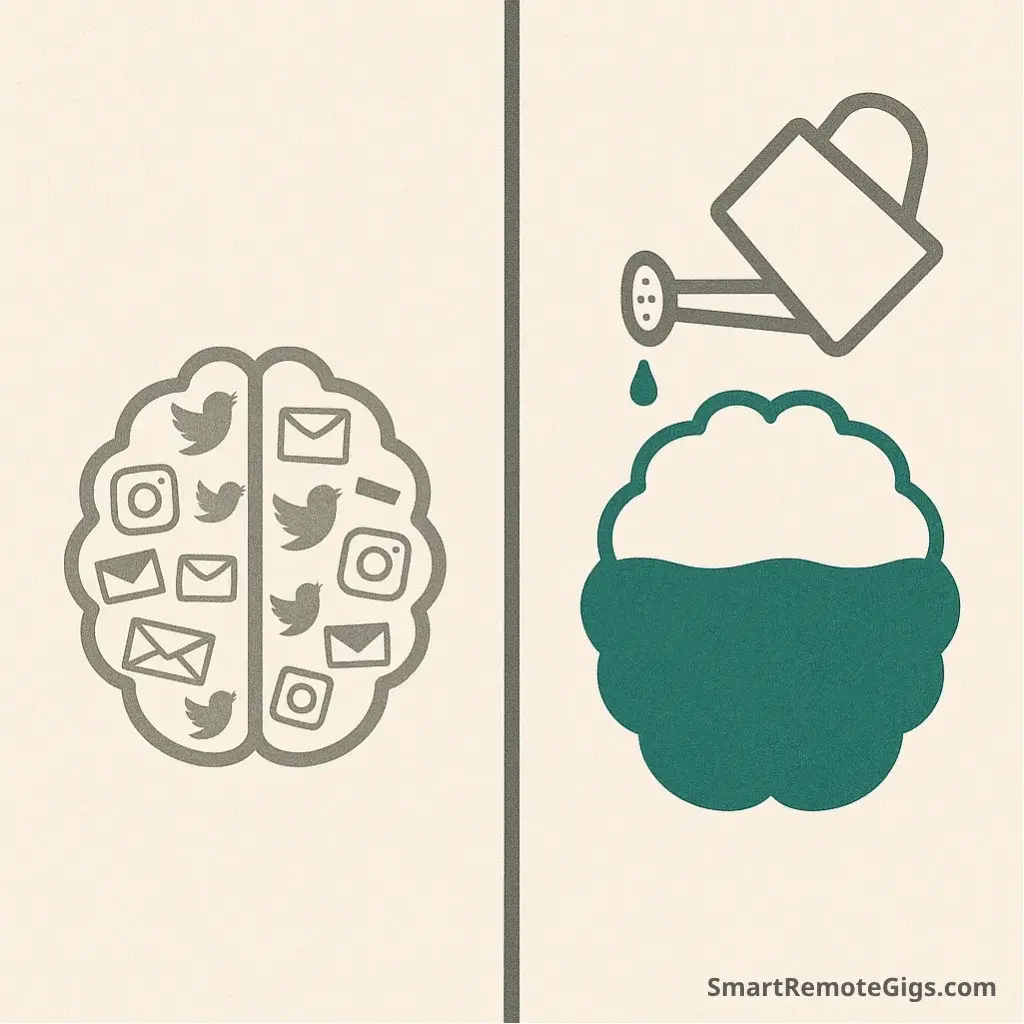
The timer rings for your 5-minute break, and you immediately grab your phone to check social media, scan through emails, or browse news websites. You’re technically taking a break from your primary task, but your brain is still in active processing mode.
Why It’s a Problem
Using breaks for shallow work—activities that require attention and decision-making—prevents your brain from experiencing true rest and recovery. Your mind remains in active processing mode, which means you don’t get the restorative benefits that make the Pomodoro Technique effective.
When you check email during breaks, you’re essentially asking your brain to:
- Process new information and make decisions
- Context-switch between different types of tasks
- Potentially trigger stress responses from urgent messages
- Continue consuming mental energy rather than replenishing it
This type of “pseudo-break” leads to accumulated mental fatigue throughout the day. You might complete your Pomodoro sessions, but you’ll feel drained rather than energized, and your focus quality will decline with each subsequent session.
Additionally, shallow work during breaks often extends beyond the intended 5 minutes. One email leads to another, one social media post leads to endless scrolling, and before you know it, your break has become a 20-minute distraction session.
The Fix
Transform your breaks into genuine restoration periods that recharge your mental batteries and prepare you for peak performance in your next Pomodoro.
🔋 Restorative Break Activities:
🚶 Physical movement: Stand up, stretch, do jumping jacks, or take a short walk. Physical activity increases blood flow to the brain and helps process stress hormones that accumulate during focused work.
👁️ Visual rest: Look out a window at distant objects, close your eyes, or practice the 20-20-20 rule (look at something 20 feet away for 20 seconds). This gives your eyes a break from screen focus and can reduce eye strain.
💧 Hydration and nutrition: Drink water, have a healthy snack, or prepare a cup of tea. Proper hydration and blood sugar levels are crucial for maintaining cognitive performance.
🧘 Breathing exercises: Practice deep breathing, brief meditation, or simple mindfulness exercises. Even 2-3 minutes of focused breathing can activate your parasympathetic nervous system and promote mental clarity.
👥 Social connection: Have a brief, positive conversation with a colleague, friend, or family member. Social interaction can boost mood and provide emotional restoration, but keep it light and time-bounded.
📵 The “Digital Sabbath” Rule:
Make your breaks a digital-free zone. No phones, no computers, no screens. This separation helps your brain truly disengage from work mode and enter restoration mode.
⏰ Set a break timer: Just as you time your work sessions, time your breaks to prevent them from extending indefinitely. Use your phone’s timer or a dedicated break app to ensure you return to work refreshed but on schedule.
📈 Progressive break enhancement: As you become more experienced with the technique, experiment with break activities that specifically support your next work session. For example, if your next Pomodoro involves creative work, spend your break in nature or doing light physical activity to boost creative thinking.
Mistake #5: A “One-Size-Fits-All” Approach
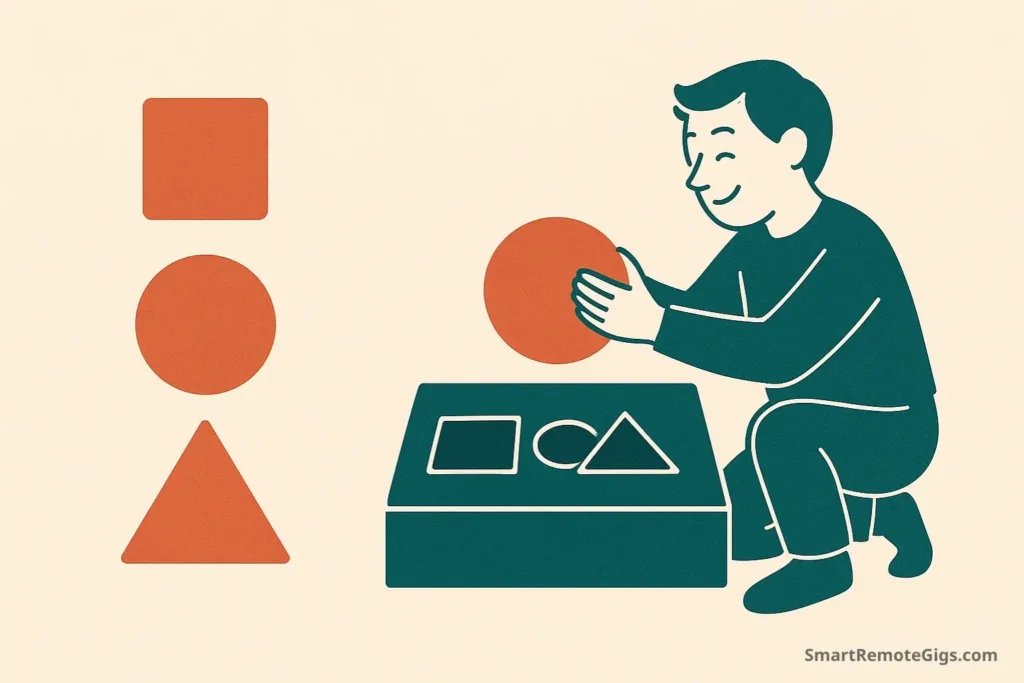
You’ve read that the Pomodoro Technique uses 25-minute work sessions, so that’s exactly what you do for every task, every day, regardless of the type of work or your natural energy rhythms. When it doesn’t feel right, you assume the technique doesn’t work for you rather than considering customization.
Why It’s a Problem
While 25 minutes is an excellent starting point based on research about average attention spans, it’s not a magical number that works optimally for every person, every task, or every situation. Rigidly adhering to a standard timing can actually reduce the technique’s effectiveness when:
⏰ Your work requires extended setup time. Some tasks, particularly creative or complex analytical work, require significant mental “warm-up” time. Just as you’re hitting your stride, the 25-minute timer forces an interruption.
🧠 Your natural attention patterns differ. Some people naturally have longer or shorter attention spans, and individual differences in circadian rhythms mean optimal focus periods vary throughout the day.
📊 Different types of work have different cognitive demands. Administrative tasks might benefit from shorter, more frequent breaks, while deep creative work might flow better with longer uninterrupted periods.
⚡ Your energy levels fluctuate. Early morning focus might sustain longer sessions, while afternoon attention might require shorter intervals with more frequent restoration.
The Fix
Learn to thoughtfully customize the Pomodoro Technique while maintaining its core principles of focused work alternated with restorative breaks.
🔄 Experiment with interval variations:
📈 The 50/10 approach: Try 50-minute work sessions with 10-minute breaks for deep, complex work that requires extended focus. This aligns with natural ultradian rhythms—the 90-120 minute cycles of alertness that occur throughout the day.
⚡ The 15/5 micro-pomodoro: For overwhelming tasks or when dealing with attention challenges, start with 15-minute work sessions. This lower commitment threshold can overcome procrastination and build focus stamina gradually.
🎯 Variable timing by task type:
- Administrative work: 25/5 (standard)
- Creative work: 45/15 or 50/10
- Learning and study: 30/10
- Physical tasks: 40/10
🌅 Customize based on your chronotype:
☀️ Morning larks: May benefit from longer morning sessions (45-50 minutes) when energy is highest, transitioning to standard or shorter sessions later in the day.
🌙 Night owls: Might need shorter morning sessions (15-20 minutes) with longer sessions becoming possible as the day progresses.
📊 The “Progressive Timing” Method:
Start your day with your natural optimal interval, then adjust session length based on your energy and focus quality:
- High energy/focus: Extend sessions to 35-45 minutes
- Medium energy/focus: Use standard 25-minute sessions
- Low energy/focus: Reduce to 15-20 minute sessions
✅ Maintain the core principles:
Regardless of timing customization, preserve these essential elements:
- Clear start and stop boundaries
- Complete focus during work periods
- Genuine restoration during breaks
- Consistent work-break rhythm throughout your day
📈 Track and optimize:
Keep a simple log of your timing experiments:
- What interval lengths did you try?
- How did your focus quality compare?
- Which combinations felt most sustainable?
- What types of work benefited from different timings?
Use this data to develop your personalized Pomodoro approach that maximizes both productivity and sustainability.
Conclusion: Consistency Over Perfection
If you’ve made some of these mistakes, you’re in excellent company. Nearly everyone who successfully uses the Pomodoro Technique went through a period of trial, error, and adjustment. The key insight is that these mistakes aren’t failures—they’re learning opportunities that help you refine your approach and make the technique truly your own.
Remember that the goal isn’t to execute perfect Pomodoro sessions from day one. The goal is consistent practice that gradually builds your focus stamina, helps you understand your work patterns, and creates a sustainable rhythm of productivity and restoration.
Start by addressing whichever mistake resonates most strongly with your current challenges. If you frequently work through breaks, focus on respecting your timer. If your tasks feel overwhelming, spend time on better task breakdown. If distractions are your biggest enemy, implement the note-and-postpone strategy.
Don’t try to fix everything at once. Master one improvement, let it become natural, then tackle the next challenge. This gradual approach builds confidence and creates lasting change rather than overwhelming yourself with too many simultaneous adjustments.
The Pomodoro Technique is ultimately a tool for building a better relationship with your work—one characterized by focused attention, regular restoration, and steady progress toward your goals. With these common mistakes identified and solved, you’re well-equipped to make that relationship both productive and sustainable.
For more detailed guidance on implementing the technique correctly from the ground up, revisit our comprehensive Pomodoro Technique Guide to ensure you have a solid foundation.
Your next successful Pomodoro session starts now. What will you choose to focus on first?
If you find that your challenges go beyond these common mistakes, particularly if you’re navigating focus with a neurodivergent brain, our specialized Pomodoro & ADHD guide offers targeted strategies.
